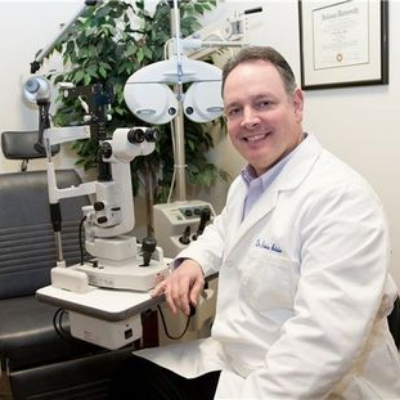The Value of Regular Examinations with an Eye Doctor Optometrist
The Value of Regular Examinations with an Eye Doctor Optometrist
Blog Article
Exploring the current Technical Innovations in Optometry and What They Mean for Eye Doctors
From the precision of Optical Coherence Tomography to the nuanced understandings supplied by AI-driven diagnostic tools, these technologies are establishing new standards in individual analysis and therapy. As these improvements permeate the technique, eye doctors are faced with the difficulty of welcoming these tools to boost client results.
Innovations in Diagnostic Equipment
Progressing the area of optometry, innovations in diagnostic tools have actually transformed the method eye care experts analyze and detect visual impairments and ocular problems. The previous decade has seen significant technical innovations, enabling even more exact and thorough analyses. Optical Comprehensibility Tomography (OCT), for instance, gives high-resolution cross-sectional photos of the retina, enabling the very early detection of diseases such as glaucoma and age-related macular deterioration. This non-invasive imaging strategy has actually ended up being vital in modern optometric practice.
Another secret advancement is the intro of innovative corneal topography systems, which map the surface curvature of the cornea with precision. These devices are particularly advantageous for suitable get in touch with lenses and diagnosing corneal conditions. In addition, electronic retinal imaging has transformed typical ophthalmoscopy, offering thorough, scenic sights of the retina that promote comprehensive visual examinations.
The advancement of wavefront aberrometry has actually additionally been essential, allowing the evaluation of refractive mistakes with unrivaled accuracy (Eye Doctor). This technology assists in customizing rehabilitative lenses and enhancing surgical end results for refractive surgeries. Collectively, these analysis innovations encourage eye doctors to supply superior patient care, ensuring early intervention and customized therapy techniques, ultimately enhancing aesthetic wellness outcomes
AI in Patient Administration
Structure on the structure of advanced analysis tools, the unification of artificial knowledge (AI) in individual administration represents a transformative leap for optometry. AI systems are significantly used to boost performance, precision, and personalization in patient treatment. By examining vast amounts of information, AI can determine patterns and anticipate potential eye conditions, enabling eye doctors to tailor treatments much more efficiently. This capability is critical in handling persistent eye illness such as glaucoma and diabetic retinopathy, where very early detection and constant surveillance are key.
Additionally, AI-driven platforms assist in structured person communications and management processes. Automated scheduling, virtual assessments, and individualized follow-up plans not just enhance patient contentment but additionally optimize time administration for practitioners. These systems can triage clients based on the necessity of their conditions, guaranteeing that those in essential requirement obtain prompt attention.
Additionally, AI enhances decision-making by giving eye doctors with evidence-based recommendations and treatment paths. By incorporating data from digital health documents, AI tools provide understandings that notify professional choices, reducing the risk of mistakes and boosting person end results. As AI remains to evolve, its role in client administration will likely broaden, improving the landscape of optometric treatment.
Breakthroughs in Retinal Imaging
In the realm of optometry, retinal imaging has experienced exceptional technical improvements that are boosting analysis capacities and person treatment. Developments such as Optical Comprehensibility Tomography (OCT) and fundus digital photography have transformed exactly how eye doctors picture and evaluate the retina. OCT, specifically, provides high-resolution, cross-sectional pictures of the retina, enabling the detailed examination of its layers. This capacity is invaluable for very early discovery and management of problems like glaucoma, diabetic person retinopathy, and age-related macular deterioration.
Improved imaging modalities like OCT angiography are additional refining diagnostic precision. This non-invasive strategy maps blood flow in the retina, offering important insights right into vascular health without the requirement for dye shots. Additionally, adaptive optics technology is being integrated right into retinal imaging systems to fix eye aberrations, providing extraordinary image quality. Such improvements facilitate the recognition of min retinal changes that can represent condition progression.
In addition, developments in expert system are enhancing retinal imaging by allowing automatic evaluation of huge datasets. These systems help optometrists in identifying patterns indicative of pathology, thereby improving analysis accuracy and efficiency. Collectively, these technologies are transforming retinal imaging right into a foundation of modern-day eye treatment, enhancing outcomes and increasing healing possibilities.
Teleoptometry's Expanding Duty
Teleoptometry is significantly becoming an essential part of eye treatment, driven by advancements in electronic interaction and analysis devices. This is specifically advantageous in country and underserved areas where access to specialized eye care is typically limited.
The integration of synthetic intelligence (AI) more improves teleoptometry, enabling the evaluation of visual information and assisting in the detection of eye problems such as glaucoma and diabetic retinopathy. AI-powered formulas can quickly analyze intricate imaging data, supplying optometrists with valuable understandings that reinforce scientific decision-making.
Moreover, teleoptometry sustains continuity of treatment with smooth integration with digital wellness records his comment is here (EHRs), permitting optometrists to keep extensive patient backgrounds. This ensures that clients receive consistent and individualized treatment even when talking to various practitioners.
In spite of these benefits, challenges stay, including making certain data safety and taking care of client assumptions. Teleoptometry represents a considerable stride in the direction of even more obtainable, efficient, and patient-centered eye treatment. As innovation advances, its duty is poised to increase better.

Future Fads in Eye Care
A myriad of cutting-edge trends is readied to improve the future of eye care, driven by technological advancements and the advancing demands of clients. One significant fad is the combination of expert system (AI) in diagnostics, which promises to improve the precision and effectiveness of eye evaluations. AI formulas can assess substantial amounts of information from retinal pictures, potentially identifying conditions like diabetic find more retinopathy and glaucoma earlier than traditional methods.
Additionally, tailored medicine is obtaining traction in optometry, with genetic testing notifying customized treatment strategies. This method intends to enhance patient end results by customizing interventions to individual genetic profiles. Wearable technology, such as clever get in touch with lenses, is likewise coming up, providing real-time monitoring of intraocular pressure or glucose levels, hence providing constant insights into eye and systemic wellness.
The adoption of augmented reality (AR) and online truth (VIRTUAL REALITY) in training and individual education is another emerging pattern. These innovations offer immersive experiences that can boost understanding and skills both for optometrists and individuals. As these patterns evolve, optometrists have to remain abreast of technological improvements to provide cutting-edge treatment, making sure improved client outcomes and satisfaction in the dynamic landscape of eye care.
Final Thought

Collectively, these diagnostic advancements equip optometrists to deliver superior client treatment, guaranteeing very early treatment and customized treatment strategies, eventually boosting visual wellness end results.

As these innovations continue to evolve, optometrists should adjust and integrate them into practice, inevitably enhancing workflow performance and elevating the standard of eye care provided to individuals.
Report this page